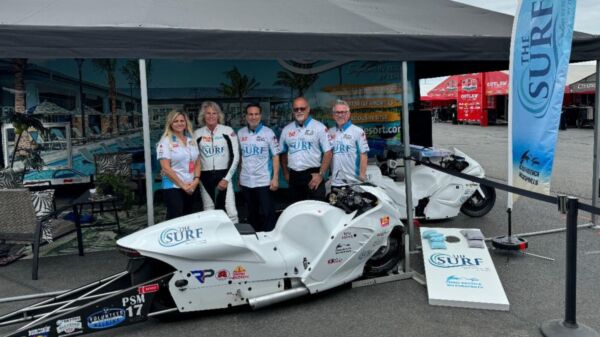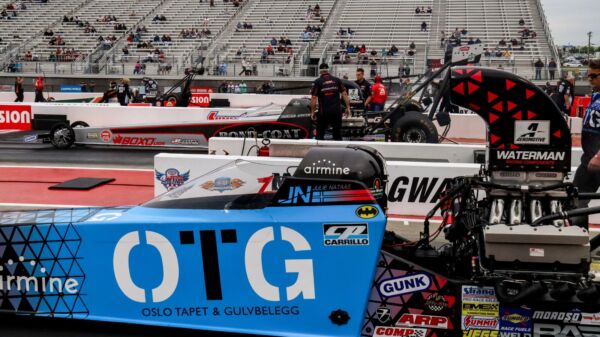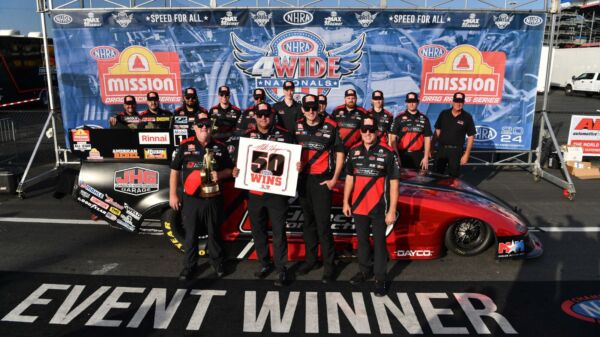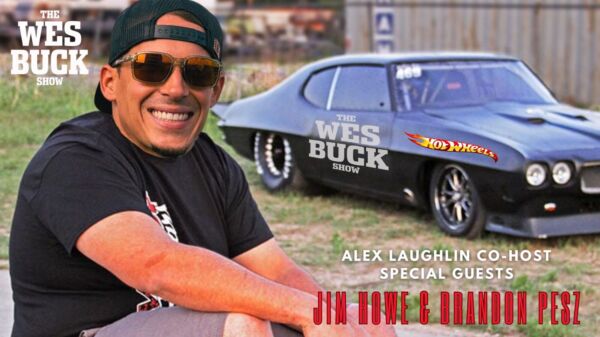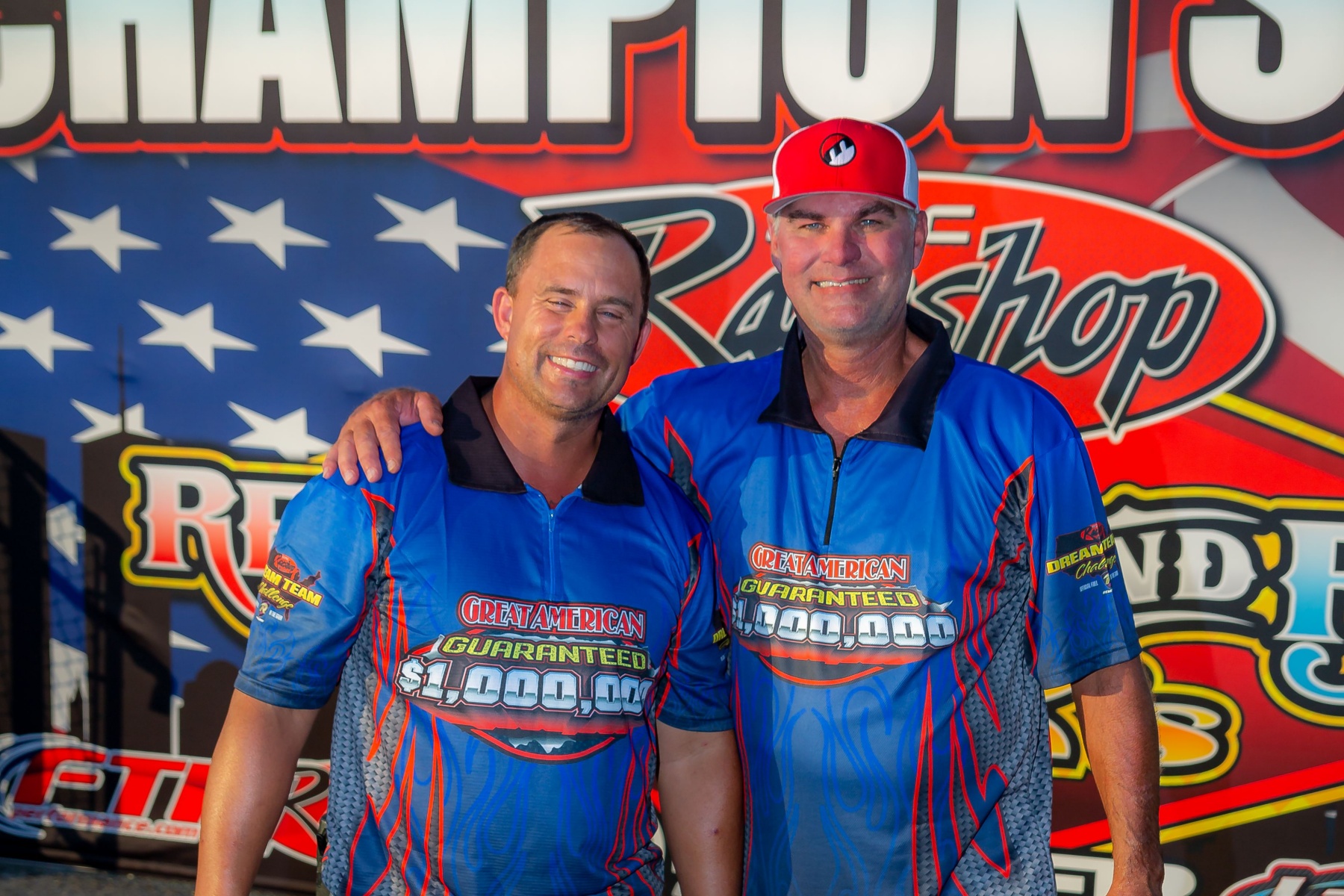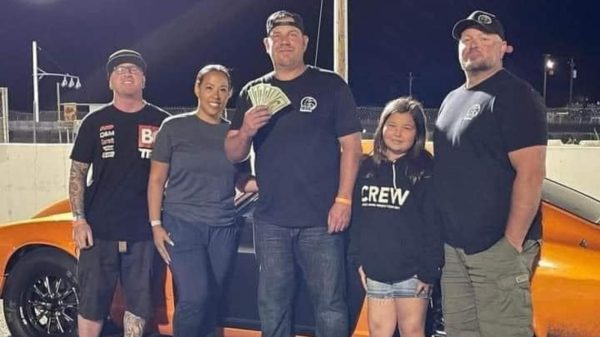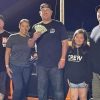It’s a hot, humid Mississippi evening and Gaylon Rolison Jr. is on his way home from the office. He’s been in meetings all afternoon, reviewing sales data for Coca-Cola’s line of bottled soft drinks. As a sales supervisor for the soda giant, Rolison is all about numbers. It’s his job to know the numbers and to increase the numbers – anything from market share to shelf space to total sales – in the nine stores he oversees in the area. On top of all this, he’s a longtime bracket racing promoter. His King of the Coast series has been contested at Gulfport Dragway every year since 2005.
A couple hours away in Louisiana, Britt Cummings is getting a striping machine ready to go paint lines on a grocery store parking lot. It’s been raining for six weeks, so work orders have been piling up. Striping parking lots has been the family business since 1985 when Cummings’ father, Larry, started the business. He’s since retired, leaving the work up to Britt and his brother, Slate, as well as his son, Cole. It’s hard, unglamorous work, especially in the dead heat of the summer, but it’s helped to pay for the Cummings family’s racing efforts for over 30 years.
[Editor’s Note: This story originally appeared in DI #170, the Sportsman Issue, in August of 2021.]
From these two very different career paths, Rolison and Cummings have developed traits and learned principles that now apply to their joint effort as promoters of big-money bracket races like the SDPC Raceshop Great American Guaranteed Million presented by Chevrolet Performance. Cummings, a self-proclaimed “redneck” with a wealth of experience and success as a bracket racer, brings to the table big ideas, a racer’s mentality, and a never-quit work ethic. Rolison, the by-the-book numbers guy, knows what it takes to put on a race that benefits the racers, the track, and the promoters.
It’s a combination that’s worked for going on 15 years. Their first collaboration was as simple as Cummings adding his name to the flyer and offering some ideas to appeal to fellow traveling bracket racers. The 2009 Great American Bracket Race at No Problem Raceway in Belle Rose, Louisiana, was just the beginning, as they’ve since added the Dream Team Challenge to that event and moved it to Holly Springs Motorsports. Their lineup also includes the Great American Guaranteed Million, which made its debut at Memphis International Raceway in 2020 and will move to Capital City Motorsports Park in Montgomery, Alabama, for its 2021 running November 10-14. Thirdly, the SDPC Raceshop Red, White and Blue $20Ks presented by Moser Engineering at Holly Springs was added to the lineup last year.
Neither promoter could’ve predicted the events that have transpired over the last decade-plus.

Cummings, who’s won numerous NHRA and IHRA national event titles to go along with bracket race wins, is planning on going all-in on big-money bracket racing this season. He sold his Stocker from the family’s fleet of seven cars that they typically haul around to 16-20 NHRA national and divisional races each season. He’s become disenchanted with that world, while simultaneously growing more passionate about big-bucks bracket racing.
“I’ve been helping Gaylon put on races for 13 or 14 years now, and just being on that side of it, it really, really makes it hard for me to go to a race like NHRA nationals and get treated like a child,” Cummings says. “And to me, they could care less whether you’re there or not. But you know, people have said that NHRA don’t care if sportsman is there. Well, I’ve always kind of defended them, but now I’m starting to see it. I don’t know if it’s the age I’m at or what, but just putting on races now and knowing how you’re supposed to treat a customer, it’s kind of changed my attitude towards everything.”
Significantly, the only bracket races Cummings has completely taken off the table are his own. He competed in the first race he and Rolison put on, but he wouldn’t allow himself to participate as a racer in any of their events after that.
“The second year, I said, ‘I don’t really feel right racing in it, so find me something to do,’ Cummings says. “So, I think from year two to year nine I ran the back of the stage lanes.”
Even that assignment became problematic when Slate won a 50-grander at one of their events.
“I did not even think it was a thing, but people absolutely had a problem with it,” Cummings says. “Saying that he’s racing on house money, blah, blah, blah, he’s racing with nothing to lose, which 100% was not the case. Slate, and then Cole when he started racing in them for a year or two, they had their own tab, they paid their own money.”
Britt and Gaylon collectively decided the integrity of their races was crucial, so they politely asked family members to sit out their races.
“I think the year after [Slate] won the 50, he won a dragster race in Memphis, and that pretty much sealed the fate of him and Cole being able to race our races,” Cumming says. “We as a team, me and Gaylon, had to make a decision to tell them they couldn’t race; that would be Slate, Cole, and Gaylon’s brother, Daniel. Tough decision. Real tough decision, but business wise, I think at that point is when our Great American brand turned around.”
Their events are now some of the most respected bracket races on the schedule, drawing support from racers and sponsors alike. At this year’s Dream Team Challenge, over 550 entries were on the books. Over 400 total entries were sold for the Red, White and Blue $20Ks in late June. At the Guaranteed Million last fall, sponsors contributed more than $80,000 in giveaways for the racers.
Beyond racing for huge cash payouts and generous prizes from industry-leading manufacturers, racers have come to expect a fun environment at Cummings and Rolison’s races. At the Guaranteed Million, racers and crew members could eat a full spread of Cajun food at the free Troy’s Snack Shack. A Jumbotron in the staging lanes allowed people to watch on-track action from the lanes. A $5,000-to-win golf cart race was held when a hurricane brought two days of rain to the event. And even through the rained out days, the event live feed kept rolling on, as announcer Jake Hodge and Top Fuel star Clay Millican interviewed racers and sponsors. It all added up to make one memorable event.
“Britt and I worked on getting that event put together for two or three years prior to us releasing it,” Rolison says. “I would say that event is probably the biggest feather in our cap, just executing that race and doing the things that we did within that race. You sit back and look at it and just feel like, ‘Man, we really pulled that off.’ It was a great moment for both of us.”
In this Drag Illustrated interview, Rolison and Cummings share the stories behind their events and offer their thoughts on the state of bracket racing as it stands, as well as where the sport goes from here.

Your various races have certainly been on every bracket racer’s map for a while now, but the Great American Guaranteed Million last year really sent your brand to another level. How did you start planning that?
BRITT CUMMINGS: After the first Dream Team race, I started thinking, “Somebody eventually is going to have a guaranteed million. Why not me and Gaylon?” So, I started running numbers, and I had a small group of people that I lean on for feedback and brainstorming. They’ll answer my questions and I’ll spin stuff off of them. I brought up the idea to them. Everybody signed a non-disclosure agreement.
It was six months before I even brought it up to Gaylon, believe that or not. Because when you approach Gaylon with something, he’s going to have a line of questions. He is a black-and-white guy, by the book, so I had to have my shit together when I approached Gaylon six months after the fact, after I started running numbers and asking a few questions to a few people.
When I presented it to him – I think it was in December of ’18 – he asked a series of questions. “Tell me how this is going to work. How can we guarantee a million? What is our risk? Why do you want to do this?” Just all the questions I thought he would ask, I had answers for. It took probably three to four weeks to convince him to do it, and then finally he jumped on board and we planned damn near a year. We were going to announce it on the Saturday of our Dream Team race in Memphis. That Friday morning, another promoter announced another Guaranteed Million.
So, we elected not to announce it the next day. We decided to wait until July to announce our race. We had the flyers done, we had our billboards done, and we had our A-frames done. We were prepared to have a Million, and I think everybody saw that and got excited about it. We actually had a TV deal put together for it on a major network, and because of COVID, that kind of shut all that down.
You ended up postponing the Guaranteed Million from its original May date to mid-October. How hard was it for you guys to have to postpone that due to COVID after all the planning that you guys had done?

Gaylon Rolison Jr.
GAYLON ROLISON JR: At first, I felt like it was a difficult decision, but it was the right decision because of COVID and the situation that it presented. Racetracks were just opening back up and racers hadn’t really raced, and for some of those racers, that was going to be their first race of the year. We felt like, along with the racers, that’s not the race to start your racing season. Those racers had a lot of money tied up in that race and they wanted to be sure that their equipment and that they as racers were at peak performance going into that event because let’s face it: you’re paying $3,000 to enter that race. You hope to be good. After you sit back and think about it, it was a difficult decision to make but it was the right decision to make.
CUMMINGS: Oh God, it was a sickening feeling. I mean, we were both sick. The unknowns of that was big time. I mean, I was in Gainesville [for the NHRA Gatornationals] when the sportsman ran to completion on Friday and they sent the pros home. I was on the way home, talking to Gaylon on that Sunday. I was like, “Hey man, this is coming.” So, we started running a plan B and everything was kind of fluid at that time. You didn’t know when you were going to be allowed to race, especially at a corporate-owned track.
We worked closely with Justin Kamm at MIR and the county, and when they started kind of freeing things up, that’s when we decided our date in October. But I can tell you from April to October, I still had that sickening feeling. Didn’t know what was going to happen. We had pre-entry going. We had sold a lot of entries, but we weren’t sold out. Guaranteeing a million dollars, we were prepared to take an ass-whooping on it. We didn’t want to, but we were prepared for it. Luckily, everything worked out.
You actually were able to pay out more than a million, right? How’d that happen?
CUMMINGS: The week of the race, as a promoter, I would have never thought that I would turn down 100 entries at $3,000 a pop. But we only said we were taking 450 with a little bit of oversell for no-shows. The week of the race, man, I’m telling you, we turned down 100 entries, people wanting to come. But we did what we said we were going to do. There were no no-shows, so actually 472 [entries] went down, which is exactly what we oversold the race for the no-show deal. We took and added $66,000 to the purse, which was 100% of the entry fees from the oversells, and we added it back to the purse. We didn’t keep a dime of it.
We’ve had people in the industry tell us, “Man, you all should’ve really played that up that you all gave back $66,000.” Well, we’re not like that. We don’t like to pat ourselves on the back. We just like to do what we say we’re going to do, plus more.
For total payout, it started off being $1.268 [million], and then we added $66,000, plus the three 40-grander races – we added every bit of entry fee back from them also, and I think that was another $20K – that would’ve been $1.354 million.
ROLISON: A lot of people don’t know that race didn’t pay a million to win. It actually paid $1,066,000 to win. So it didn’t look like we were trying to be a little sketchy with taking any more entries, which makes the event more profitable, we took all the money past 450 entries and we added it back into the purse, which was $66,000. We could’ve kept that money in our pocket, but we just knew the right thing to do. So, that race ended up paying the winning person [Jeff Serra] $1,066,000 a win.
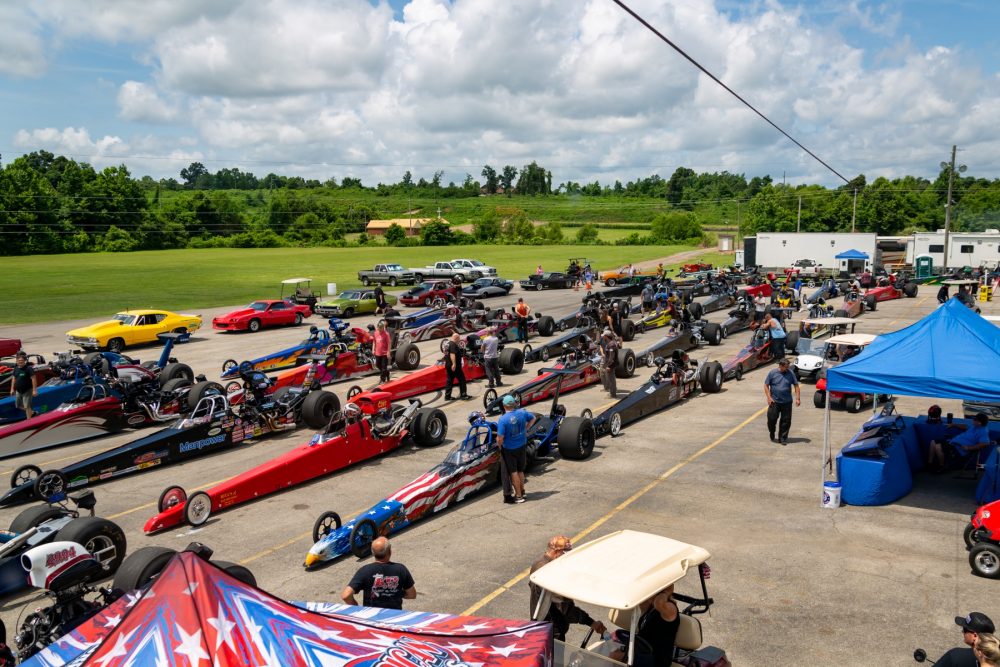
ROLISON: A lot of work. A lot of belief. A lot of belief in the process you’re taking to make that race a success. Sometimes when you just sit back or if I put my Great American Guaranteed Million hat on and I’m driving down the road and I’m just thinking about it, it’s like, man, it’s still hard to believe that I was associated with that event.
It also took the right people. This is probably the most important part of this whole conversation. Britt and I firmly believe that if you want to be successful, you have to surround yourself with people that you can trust. When you have people around you that you can trust, your chances of being successful are at an infinite level. We obviously can’t do it alone.
A few of those people are Frank and Tammy Kohutek, Joel Boyd, Jennifer Johnson, Steve and Lora Byrum, my wife, Jennifer, and my oldest daughter, Morgan, along with my parents, Kim and Gaylon Rolison Sr. My mom and dad run the front gate. They handle a lot of money. So, having somebody up there you can trust matters. I also want to thank Britt’s brother Slate and Britt’s son Cole Cummings. The list goes on: Pam Kendrick, Paul Cartwright, “Jabbo” Terry Forsythe, Beau Cantrell, “Rooster” and “Smoke,” Jake Hodge, Cody Pollage, Ryan Gleghorn, Martha Edwards, Cody Harger, Madison Ellison, and Paige Hamlin.
These folks have all had their impact on our events. I know that’s a long list, but it would be a fallacy on my part if I didn’t mention those people, because without them, our level of success would not be at the level it is now. Again, to be successful, you got to have good people around you, and we felt like we surrounded ourselves with some of the best.
Looking back at the Guaranteed Million, do you think it had the impact that you hoped it would?
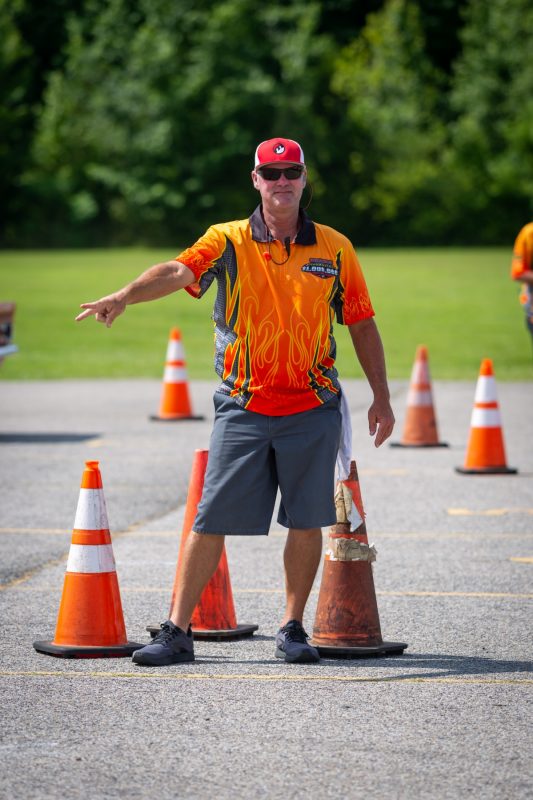
Britt Cummings
CUMMINGS: Honestly, as far as how the race went down and everything we did there, just kind of showcasing the bracket racers, I think it was a very big positive. It had a big impact on everything and how things are going to be done in the future, but there was also a negative. With the COVID deal ending up the way it did and the way it pushed back all these races, there were four weekends in a row of big races. I think it was three Millions and another big $250,000 race. Well, one Guaranteed Million, two not-guaranteed millions, and a $250,000 race.
But a lot of people spent a lot of money that month, and I think we are starting to see that now. Some people kind of overstretched themselves, and a lot of them races was on credit cards, and you don’t worry about credit card payments until a month after. The trend this year with the bigger bracket races has been, the car counts have been down, except for the two we put on, so we consider ourselves very lucky. But I think there was a big negative to all of them big races going on at one time, and I raced in one of them. I think it was a negative to it.
Bracket racing, and especially big-money races, is becoming a crowded market. How much more room for growth is there in this area?
CUMMINGS: Well, as of right now, I personally think that we are probably, at best, 50/50 at having another Guaranteed Million next year. I think racers are going to go for value from here on out, and it’s already showing this year. At the Dream Team race we had, it was $10K, $20K, and $10K for $350, and we had over 560 cars entries. The Red, White, and Blue race was a buy-one-get-one entry for $400 and we ran two $20Ks. Everybody there was doubled, and we had over 400 entries, which was all we sold.
But the days of $1,500 entry fees, we think they are few and far between right now. We think the racers are definitely going to not spend as much. I can tell you this; as a racer, for me personally, I’m only going to go to a race that says “guaranteed” on the flyer to start off with, and then I’m going to go to a race that looks good on a flyer.
ROLISON: I don’t know. I think everybody can agree for the most part that that balloon has to pop at some point, but it hasn’t.
This weekend there was a $300,000 race somewhere on the East Coast. Michael Beard and Anthony Walton are putting on that race and it looks like there’s going to be a lot of cars there. A ton of cars. I think someone was talking about, if you double enter that race and buy back, you would spend about $5,000. That’s a lot of money to go racing all weekend.
At our million-dollar race, we had racers that had tabs up to $20,000. If I went to a racetrack and spent $20,000, I’d be scared to get home to my wife, I’m just saying. So, I think there’s growth, but I think there’s going to be a correction at some point. I think you’re seeing a little bit maybe now, maybe not. Maybe just a touch, but I think there are some outliers that are making that happen due to the status of our economy. And I think there may be some political stuff going on that’s affecting that, which is a topic for another day. But I think all that has affected it a little bit, but I do think there’s going to be a correction at some point.
I don’t know if that’s going to sustain forever. I remember Luke Bogacki talking about this. He basically said we all should sit back and relish this moment because 20-30 years from now, we might consider this time right now the golden age of bracket racing. Fifteen years ago, other than the original Million, there might’ve been three or four races that were premier events and they paid $50,000 to win. You almost feel like that you can go race for $50,000 just about anywhere now. A $10,000 race was a big race 15 years ago. That almost feels like just a regular Saturday night bracket race now.
And I think those races are the ones that are going to have their work cut out for them because you’re so in between. The big-money racers that like to go to the big races might not go to those in-between races. Then there might be some Saturday night warriors that can’t afford to hit those races. So, I think those what I call “in-betweeners,” they’re going to have their work cut out for them.
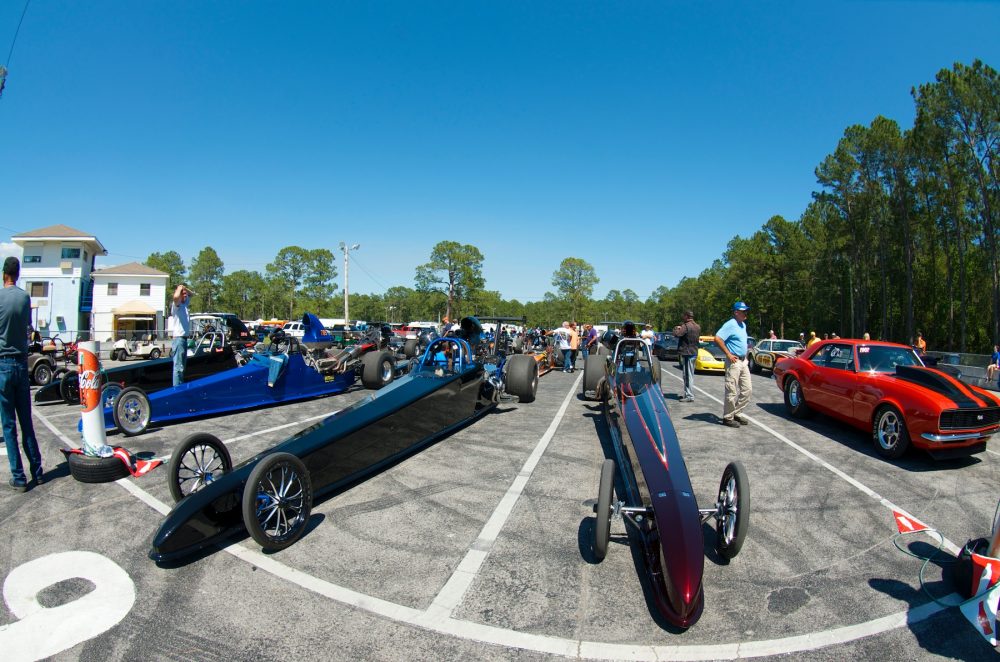
What are the challenges facing this type of racing?
CUMMINGS: We thought last year, with COVID hitting, that only the better races were going to survive, and I think that’s holding true. I think that there’s going to be a lot of people putting on races. It might not be a big race. It might be guys putting on 20-granders or 30-granders or whatever. I think they’re going to suffer. And that’s my personal opinion.
I think you’ll see some promoters get out of the game, and I think actually the ones that are going to benefit is local tracks. The local weekly races are what’s going to come out of this to the good, which is a good thing. We need every track there is. We don’t need any tracks closing up.
Like you said earlier, the schedule’s been flooded with all these big races, and everybody’s a promoter these days. Anybody can go rent a track and put on a race, but to put on a successful race and actually put thought into it, it’s a full-time job. I can tell you for the Million, for a year-and-a-half, two years, I would stripe parking lots and I would be on the phone with sponsors and racers: “Hey man, when are you going to pre-enter? Hey, can I sell you this spot here? We’re going to do this with the live feed.” For 10 hours a day, that’s what I did for a year-and-a-half, two years. And I don’t think that a lot of people put that much time into it. I think that’ll be the ones that kind of go away. And I don’t wish nothing bad on anyone, you know?
The benefit is the local tracks should do better, in my opinion. This past weekend, Tyler Crossnoe just put on a race at Virginia Motorsports Park that was track ran and track promoted, and they were knocking right on the door of 400 entries. That was good for that racetrack.
ROLISON: I think one of the challenges is that racers have so many events to choose from. I don’t know that there’s going to be enough [racers] out there to support them all. For me, that’s been one of my biggest challenges is trying to grab your racers and keep them close to you because if you let them go off, someone else is going to scoop them up.
I think another obstacle is trying to keep costs down for the racer. It’s not cheap to run a racetrack. The racetracks have to make money. Now their expenses are going up exponentially. Insurance goes up. Glue goes up. You have to pay your employees, and yet you have to pay more money for quality employees. So, trying to maintain that cost that the racers are comfortable with, that is a challenge.
Where do you see room for growth and improvement?
ROLISON: As far as improvement – and I don’t know if this has ever happened – but maybe some kind of universal rulebook for bracket racing because now rules vary from track to track and from promotion to promotion. There’s no one rule that’s right. There’s no one rule that’s wrong. As long as you have your rules in place before the event starts, and as long as you go by them, you’ll be fine. But I think if some of the bigger races or promoters would get together and try to form a universal rulebook, that would be great. That way when these racers go to these bigger races, they know the rules are the same.
Another improvement that could be made is putting more emphasis on fairness to make sure e each racer feels that they have an equal opportunity to race as far as catching illegal equipment. Obviously, it’s out there. If we can put somebody on the International Space Station, you would think somebody can develop something to prevent or catch unethical things in bracket racing.
Safety is another thing. I’m guilty like anybody else. These are adults. They know the risk they’re taking. If they choose to not wear their arm restraints, and they go down there and hurt themselves, they’re adults, and that’s their decision. But I think that mentality has got to change and I have to hold myself accountable for that too. If everybody doesn’t go home safe, what have you really done? What have you really accomplished in the grand scheme of things?
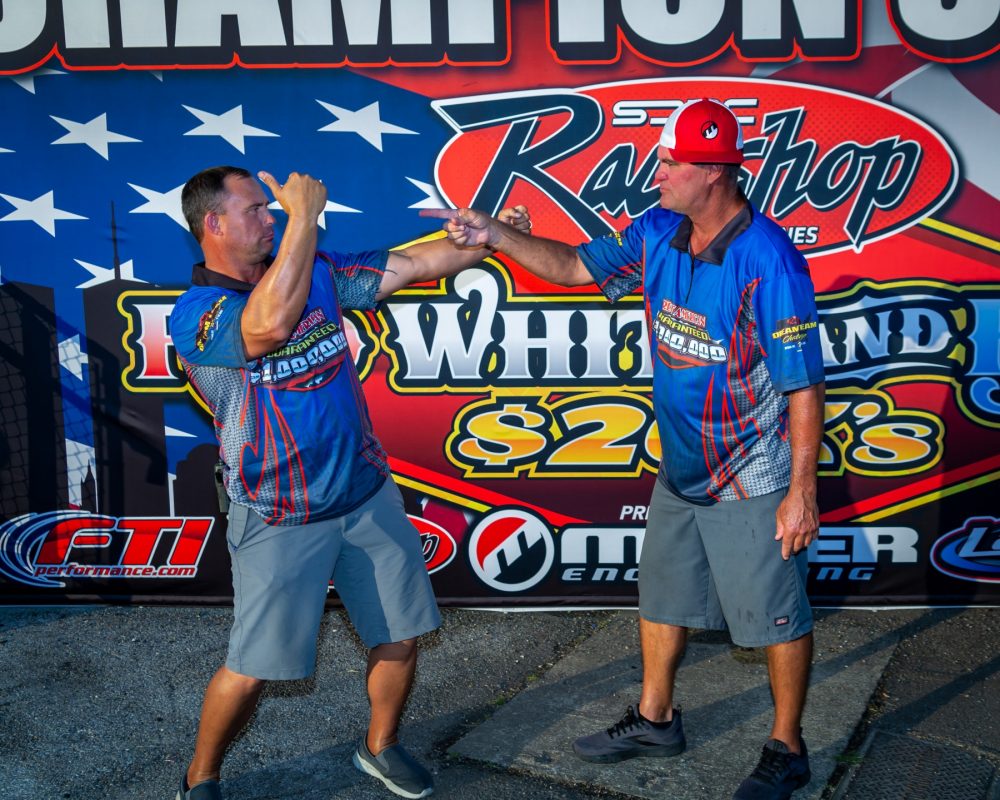
CUMMINGS: Improvement wise, I think trying to make stars out of the bracket racers, which, by the way, is a very hard task. Getting bracket racing as a well-known thing would be big. I’m not going to go No Prep-style or Street Outlaws-style, but get it well-known. If we could get 60% of the ink that No Prep and Street Outlaws gets, bracket racing would be doing a lot better.
People just don’t understand it. I think making the average person aware of it, that there’s more to drag racing than just spending all the money you can, going as fast as you can, and whoever gets there first wins. I think educating spectators and just anyone in the general household that likes any type of racing, it’s important. There has to be a way that we can do that.
Another thing is putting spectators in the seats at a bracket race. It’s hard to do. There’s another promoter, Tyler Bohannon, who had a July 4th race in Ohio Valley, Kentucky. I don’t know how many spectators he had, but he did very well. He had a fireworks show, he had the local news out there. He promoted the shit out of it and he had the spectators there. I was very impressed by it.
When we first started our Million, we had the Factory Stock class that was going to run basically for the same $3,000 entry fee. We were going to make it 90% payback of however many entered, and up to 32 cars, which would’ve been big for the Factory Stock racers getting a little bit of their investment back, but at the same time, I was going to use that to put asses in the seats.
If we could’ve made that happen without the COVID, we would’ve had Factory Stock, we would’ve had a TV show, we would’ve had Chevrolet Performance behind us in a big way – more than they were – as far as TV time and sponsorship. We would’ve possibly had Ford and Mopar. Basically, it would’ve been the biggest Factory Stock race ever. It didn’t happen, but that was my approach to putting asses in the seats for last year’s race.
I have a couple of other ideas for things that I think will work. You do have to bring in some type of side show to put asses in the seats, and I’ve got a couple of ideas. We’ll just see if they pan out.






